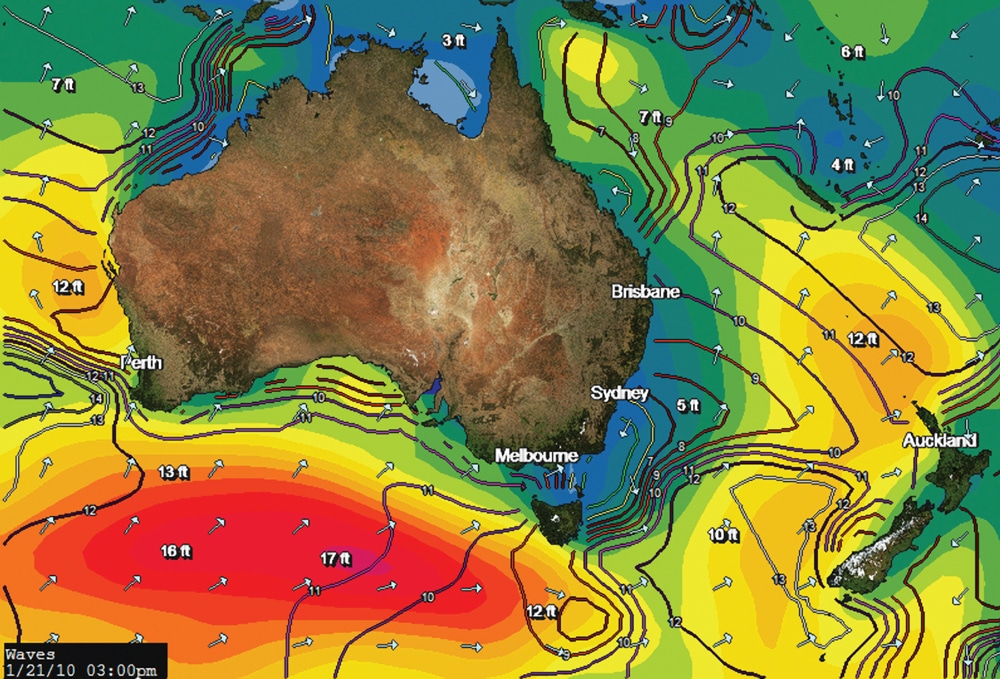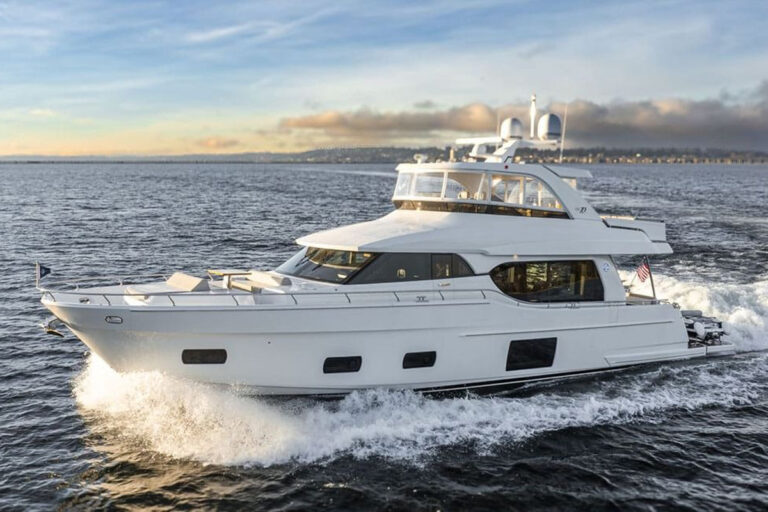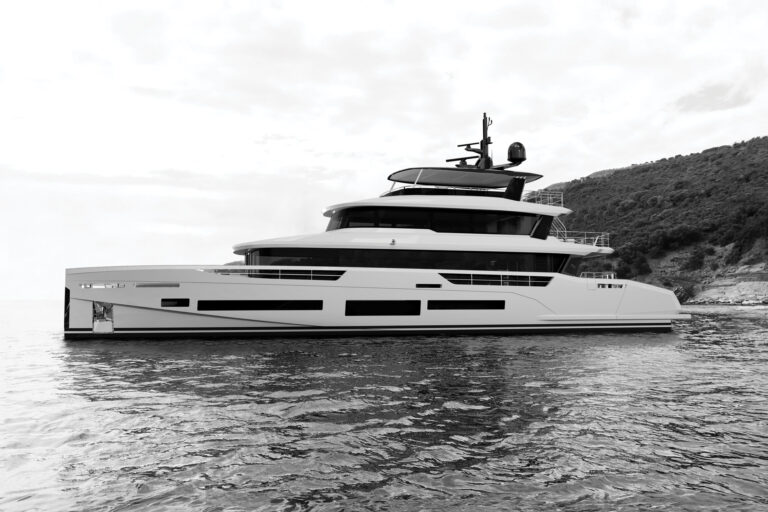
Marine Weather
As connectivity aboard small boats becomes common, laptops have increasingly become the weather forecast delivery method of choice for many skippers. Earlier in the decade, we hailed as near miraculous both Sirius and WxWorx services, because they downloaded forecasts into our on-board computers from broadcast satellites, including live features such as Nexrad radar.
This year Baron Services, a parent company to WxWorx, released a version of its weather software and forecast services that uses any internet connection to graphically display Baron Quick Link forecasting data, instead of a satellite receiver.
In other words, subscribers can see wave heights, wind speeds, precipitation and lightning, not only as currently existing conditions around their vessels, but what they are forecast to be at intervals into the future. The position of a subscriber’s vessel is overlaid using a USB-type GPS receiver.
Baron, a major player in the aviation industry, came a little late to the online party, however. A competitor, ClearPoint weather, delivers data in a similar way to Baron, WxWorx, and Sirius, but never bothered with the satellite-delivery model, instead offering an internet-only package since its inception in 2007. Until Baron launched its product this year, Clearpoint alone offered a slick user console for weather information delivered online.
Of course, there are other services that deliver weather information to a boat’s computer, though they do not employ an on-screen console like Baron or Clearpoint. Ocens is a service appreciated by both cruisers and commercial fishermen, because it lets them select and purchase pieces of weather data, which can be downloaded in highly compressed form, therefore optimized for a slow satellite internet connection.
For those venturing down the Bahamas and the Caribbean Sea, only Ocens includes weather router Chris Parker’s regional forecasts in its download menu. For example, he will talk about weather conditions specific to the Exumas island chain of the Bahamas and, further, will specify differences in conditions between the northern, central, and southern Exumas. This highly localized forecast is particularly useful in waters such as the Bahamas, without government VHF weather broadcasts.
Pricing varies widely among the various PC marine weather services. Most include an initial software cost, to which you must add the prices for data subscription plans and, particularly in the case of a satellite internet, connection costs. Plus, it should be noted, that most weather information (with the exception of Chris Parker) comes from government sources such www.noaa.gov and www.fnmoc.navy.mil that offer the data for free online.
For more information, visit:
www.ocens.com
www.clearpointweather.com
www.baronservices.com









